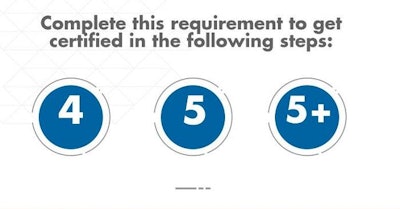
Editor’s note: In addition to publishing its regular news coverage of broiler welfare issues and the movement toward slower-growing broilers, WATT Global Media will be publishing a special series on these topics. This is the fourth installment of the series.
The Global Animal Partnership (GAP) 5-Step Animal Welfare Rating program assesses the level of welfare of animals on-farm, during transport and at slaughter. In order for broiler producers to become GAP certified, one area the producer must address is the flock’s stocking density.
As a growing number of foodservice companies and restaurant chains commit to source only chicken from suppliers that adhere to GAP standards, more producers will need to meet those standards, including the ones involving stocking density, in order for those making pledges to fulfill them.
The 5-Step program is designed as a multitiered program that promotes continuous improvement in animal welfare practices. According to GAP, it also engages a broad spectrum of producers, allows for wider product selection for greater consumer options, provides more detailed information about the level of welfare of farm animals and better informs consumers about the production systems they may choose to support.
Each set of tiered standards – from Step 1 to Step 5 – has its own requirements. GAP does not conduct audits to see if those seeking certification qualify. Instead, accredited third-party certification companies perform the audits and issue the certificates to make sure that the audits are done in an impartial manner.
While all five steps of certification for stocking density call for chickens to have enough space to express natural behaviors – including standing, turning around and preening – without touching another chicken, the requirements differ at different steps.
For purposes related to the GAP 5-Step certification program, stocking densities are calculated based on the final target weight of all chickens per flock per area at the time of catching. Operations can utilize a maximum of a two percent variation, rather than expected livability, when calculating the number of chickens to be placed within a given barn or house.
The infographic, shown below, explains the stocking density requirements for each of the five steps.

Share this Image On Your Site
The present 5-Step rating standards were issued on July 3 and will go into effect at the beginning of 2018.
GAP is a nonprofit charitable organization that was formed to bring together farmers, scientists ranchers, retailers and animal advocates with a common goal of wanting to improve the welfare of animals in agriculture.
















